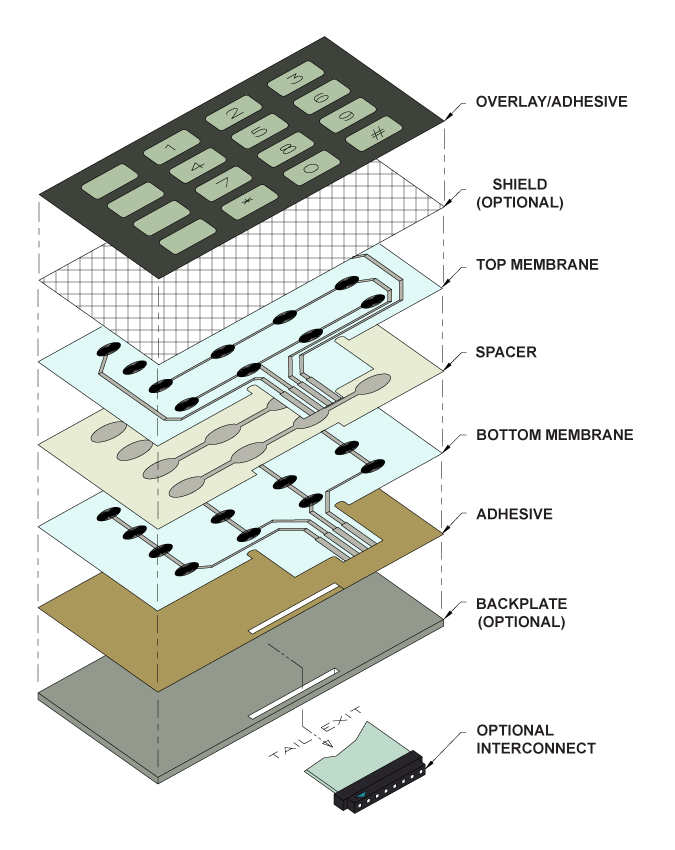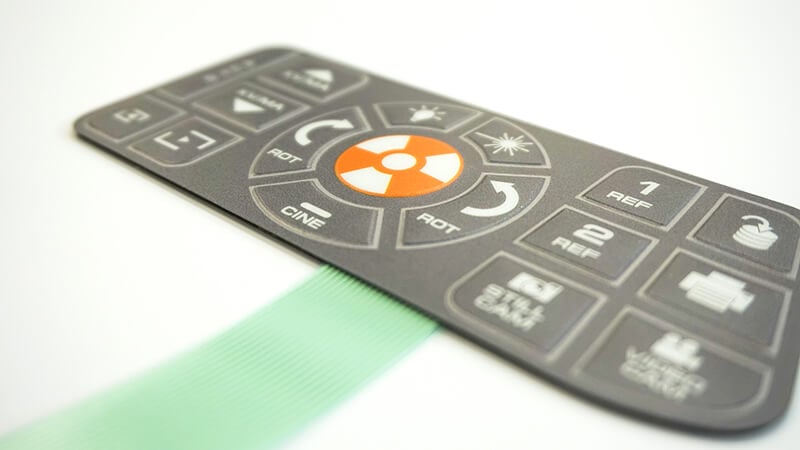Discover How a Membrane Switch Improves Toughness and Capability in Instruments
Discover How a Membrane Switch Improves Toughness and Capability in Instruments
Blog Article
Recognizing the Functionality of Membrane Switches for Customer Interface Instruments
The capability of membrane layer switches represents a significant innovation in user interface style, incorporating efficiency with visual versatility. As markets increasingly prioritize customer experience, comprehending the subtleties of membrane layer button modern technology becomes necessary.
What Are Membrane Buttons?
Membrane buttons are innovative interface gadgets that promote customer communication with digital equipment. These functional components include several layers, including a visuals overlay, spacer, and a published circuit layer. The design enables for a smooth integration into numerous electronic tools, improving both the visual and functional aspects of interface.
Membrane switches are typically utilized in a wide variety of applications, from household home appliances to commercial machinery and clinical devices. Their building and construction usually features a thin profile, making them an optimal choice for portable styles. The tactile feedback supplied by these buttons can be engineered to meet particular user choices, making certain reliable communication between the customer and the tool.
Longevity is an additional considerable advantage of membrane buttons, as they are resistant to dust, dampness, and chemicals, which improves their lifespan sought after settings. In addition, these buttons can be personalized in terms of form, size, and graphic layout, enabling for branding and user-specific features. On the whole, membrane switches stand for a practical solution for boosting individual experience in electronic gadgets, integrating capability with visual charm in an effective fashion.
Exactly How Membrane Layer Changes Job
Operating on an uncomplicated principle, membrane layer switches use a layered building and construction to register customer input efficiently. Each button contains numerous layers, including a published circuit layer, a spacer layer, and a top graphic layer, which are made to work with each other seamlessly. When an individual presses the leading layer, it compresses the spacer layer, bringing the conductive aspects of the circuit layer right into contact with each other.
This call creates a closed circuit, signifying the device to perform a details function. The style permits various configurations, consisting of responsive feedback, which can improve the customer experience by providing a physical sensation upon activation. The products made use of in membrane switches often include flexible substrates, such as polyester or polycarbonate, which ensure toughness and resilience versus damage.

Secret Advantages of Membrane Layer Buttons

An additional considerable advantage is their density. Membrane buttons are slim and lightweight, which makes it possible for makers to save room in their gadgets without sacrificing capability. This function is particularly useful in applications where weight and volume are vital factors to consider.
Furthermore, membrane switches are immune to dust, moisture, and chemicals, boosting their durability. This durability expands their life expectancy and reduces the requirement for constant replacements, causing cost financial savings over time.
Additionally, the tactile comments offered by membrane layer switches can be enhanced to boost individual interaction. They can consist of attributes such as raised buttons or audible clicks, boosting usability and individual experience.
Applications Throughout Industries
Interface tools utilizing membrane buttons are widespread in a broad variety of sectors, showcasing their adaptability and performance. Membrane Switch. In the clinical industry, membrane buttons are important to tools such as diagnostic tools and person monitoring systems, where their sturdiness and ease of cleaning are crucial for maintaining hygiene criteria. pop over to these guys Likewise, in the automotive market, these buttons are employed in dashboard controls and infomercial systems, giving a sleek and contemporary user interface for users.
Moreover, the customer electronic devices market take advantage of membrane switches in home appliances and portable tools, where small layout and user-friendly interfaces improve individual experience. Industrial applications additionally utilize membrane layer switches over for control board in equipment and automation systems, stressing their toughness and resistance to harsh environments.
In the aerospace and defense industries, membrane layer buttons are used in cockpit controls and tools, where reliability and efficiency under severe conditions are paramount. Additionally, the pc gaming market progressively incorporates membrane layer switches in controllers and arcade equipments, adding to an engaging customer experience. Generally, the adaptability of membrane switches over enables their widespread usage across numerous markets, highlighting their significance in modern-day interface design.
Future Patterns in Membrane Switch Modern Technology

Furthermore, making use of advanced products, such as polycarbonate and polyester films, is expected to climb, giving improved toughness and resistance to environmental stressors. These products add to the total longevity of membrane buttons, making them ideal for harsher commercial applications.
Furthermore, the unification of smart technology, including IoT connection, will certainly make it possible for membrane layer buttons to communicate with other devices and systems, helping with a much more interactive customer experience. This fad aligns with the expanding demand for smart gadgets across different markets, from health care to customer electronic devices.
Last but not least, modification options are anticipated to expand, enabling suppliers to develop bespoke remedies tailored to specific user needs and choices. These growths will certainly place membrane layer switches as necessary elements in the advancement of interface technology.
Conclusion
In verdict, membrane changes represent an essential advancement in individual interface technology, using a dependable and functional solution for diverse digital applications. As browse around this web-site developments in product scientific research and touch noticing modern technologies continue, the performance and applicability of membrane layer switches are anticipated to increase, reinforcing their relevance in modern digital devices.
Report this page